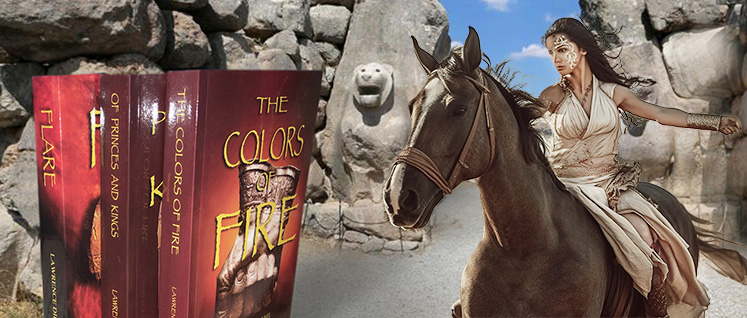Lawrence Diehl Brown

Bringing history alive in the classroom with fiction-- pros and cons.
Published Feb 19, 2024. L Brown, author.
Exciting and Instructive.
Long lists of names, dates, events, and exotic places can be challenging for anyone to connect with and understand. A good novel is a time machine Ė it transports us to distant realms and immerses us in a world where history comes alive all around us. Instead of just reading dry descriptions of events, we see those events unfold through the eyes of the characters. They become our tour guides to far off lands distant in time. We see in our mindís eye what people wore, what they ate, what they believed, how they lived and loved. We can stand in the Roman forum hearing orators rant about their politics, with everyone dressed in tunics and togas. We can stumble across the rolling deck of a wooden sailing vessel, the wind in its sails, waves spilling overboard. We can taste the salt air as the ship slices through the warm blue waters of the Caribbean. Magellan is there, Columbus and Captain Cook, dressed in their great coats, a spyglass at their eye. With historical fiction all of our senses are engaged; the sights, sounds and smells of the past become alive.
A greater truth.
Properly researched, historical fiction can do so much more than just teach the truth about the past. Itís exciting, but it can also lead to empathy for those who have suffered cruelty and injustice. It allows us to connect vicariously with marginalized peoples and feel their misery. It can help us to understand viewpoints different from our own. Historical fiction makes this happen because it uses emotion to make facts matter. It puts the people back into history and offers a more personal perspective of events and periods from long ago. It can be a struggle for children to interpret historical events that are far removed from their own life experience by time and place.
Not all history is pleasant.
So many generations have seen wars, slavery, genocide, plagues, and humans being unkind to one another. It can be difficult for a teacher to explain the darker parts of our shared history. Historical fiction allows the student to feel the struggles of different peoples, different races and cultures, and better understand how they survived, or didnít survive in this world. A good book can be a gateway for children to understand what people of other cultures have gone through, something that is difficult to convey through mere academic instruction.
Cons
The cons are that the author 1) did not research carefully, and 2) bends the facts of history to support a fictional story line. In that case, we can learn something false. Some writers exploit and emphasize the grim, shadowy, violent and dark side of history for dramatic effect, reducing the past to a movie plot. For these reasons, academic historians have distanced themselves from historical fiction. They oppose writers that touch on fantasy and imagination in an effort to craft compelling and engaging stories with the goal of getting good reviews. Ironically, academics make use of a variety of literary devices in order to get good reviews from other academics! Well-researched fiction allows us to recreate in our own mind the richness and texture of life. It puts faces on the people we study and makes them all the more memorable.
Solutions?
So why not try historical fiction when working on your next lesson plan? An engaging and exciting book can spark your studentís curiosity and send them on a lifelong journey in search of the history of the past. And it can make them better prepared for the future!

